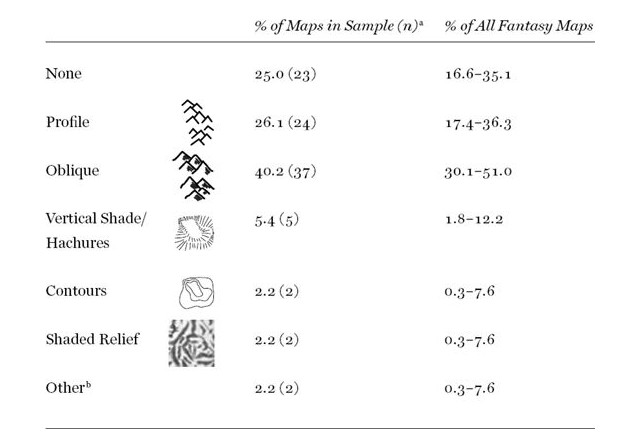 Stefan Ekman’s Here Be Dragons (Wesleyan University Press, February 2013) is a book-length examination of the use of maps and settings in fantasy literature. Maps and settings. Which is to say that maps are not the sole focus of this work: mark that. There are four main chapters, only one of which deals with maps; the remaining three deal with the issue of borders and territories, the relationship between nature and culture in fantasy cities, and the relationship between ruler and realm. Taken as a whole, this book discusses the role of place in fantasy.
Stefan Ekman’s Here Be Dragons (Wesleyan University Press, February 2013) is a book-length examination of the use of maps and settings in fantasy literature. Maps and settings. Which is to say that maps are not the sole focus of this work: mark that. There are four main chapters, only one of which deals with maps; the remaining three deal with the issue of borders and territories, the relationship between nature and culture in fantasy cities, and the relationship between ruler and realm. Taken as a whole, this book discusses the role of place in fantasy.
But I won’t be discussing that whole here: I am no literary scholar, and can’t say much of value about the chapters that do not discuss maps—nothing that would rise above the level of a last-minute undergraduate paper, anyway. But maps are something I can say something about, especially fantasy maps, since I myself have been paying attention to them over the past decade, first during my time blogging at The Map Room (see the [old] Imaginary Places category) and since then more sporadically, but with more focus, for my fantasy maps project.
And what I can say is that Ekman has done something rather new here. His analysis does not plumb the depths of the subject as deeply as I would have liked, but what he does do has not been done before, and represents the necessary first steps toward a proper critical understanding of fantasy maps.
As Ekman points out, little academic work has been written about fantasy maps (which, to be honest, is what all academics say: why write a book that has already been written?), and not much of that deals with the subject in a critical fashion. (Nor, I might add, having read much of that secondary literature myself, is there much specific focus on contemporary genre fantasy: an essay on fantasy maps is more likely to cover Schlaraffenland than Randland.) Into that relative void Ekman brings Gérard Genette’s concept of the paratext—the bits of a work that surround the text—and Niels Windfeld Lund’s concept of the doceme—an object that is part of a greater document but never something in and of itself—as ways to relate the map to its text.
Ekman attempts to say something about the current state of fantasy maps: what they look like, what elements they contain. To achieve this, Ekman went and did something unusual: he brought statistics into the mix, and based his analysis on a random sample of two hundred fantasy novels. That sample turned up at least one surprise: only a third of the sampled books came with a map—which is to say that two-thirds of them did not. Received wisdom says that it’s hardly possible to have a fantasy novel without one, so this is very interesting indeed—though Ekman is at pains to point out that his study did not allow him to drill down further to see whether high fantasy—secondary world fantasy—was more likely to have maps than other forms.
Feature by feature, Ekman builds a portrait of the modern fantasy map by showing how many maps from the sample have a given attribute.
In brief, a typical fantasy map portrays a secondary world, a compass rose or similar device showing its orientation with north at the top. It is not set in any given hemisphere (not necessarily in a spherical world at all), although there are reasons to believe that clues in the text would indicate north as the direction of colder climates. Apart from topographical map elements such as rivers, bays, islands, and mountains, such a map would also contain towns and other artificial constructions. The hill signs used are typically pre-Enlightenment (either profile or oblique). (p. 66)
Indeed, how fantasy maps show mountains and hills—using profile and oblique signs, rather than contours, hachures or shaded relief±is the least modern aspect of modern fantasy maps:

This sort of work can seem a little obvious, but it’s noteworthy: first for not having been done before, and second for laying the groundwork for future research. It’s an important beginning.
The second part of the maps chapter involves a close reading of Tolkien’s maps—the maps accompanying The Hobbit and The Lord of the Rings—that serves as a case study for the theoretical concepts mentioned above and an example of what Ekman found statistically. Tolkien’s maps are an excellent choice for this, not only for the quality of the maps and the text to which they are attached, but also because these maps will almost certainly be familiar to anyone interested in reading a book like this. (Who is interested in fantasy maps but has never seen a map of Middle-earth? Honestly, who?) If the critical terms are unfamiliar, at least the subject isn’t.
Ekman admits himself that his sample is a little small, and that he would have liked a smaller margin of error. He establishes what the current state of fantasy map design is but does not interrogate its history or origins. Which is to say that there is a lot of ground left to cover. (To be honest, I’m relieved: I was kind of worried Ekman was going to answer all my questions, leaving me nothing to work on.) As far as the scholarly study of fantasy maps is concerned, this is the first word, not the last.
Previously: A Scholarly Work on Fantasy Maps.
